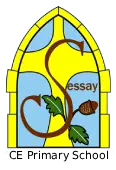Music
Implementation
- Mechanics of instruments (Wooden One-octave Organ For Young Technologists)
- Listening & Appraising (watching productions, such as at Ampleforth College)
- Performance (Young Voices)
Intent:
We have designed our Music Curriculum to inspire and excite children with a range of rich and memorable learning experiences.
We aim to ensure:
- Foster our children’s enthusiasm for the subject, while also giving them the skills, knowledge and understanding necessary to support their continued musical journey in and beyond the primary school.
- Allow children to explore the emotional connection to music.
- Give children the opportunity to watch and participate in the performing arts, allowing them to express themselves as musicians.
- Explore other cultures and the diverse world of music.
- We recognise the strong links between music and other curriculum areas.
Implementation:
Music at Sessay is taught based on the Charanga Scheme linked to the Model Music Curriculum.
Music is taught weekly with a focus on the ingredients of music – pulse, pitch, dynamics, rhythm, texture and tempo, as well as listening to, improvising, singing and composing music. Children are taught notation and play tuned instruments including, the ocarina, recorders, glockenspiels and ukuleles.
Each class in school puts on a production during the school year to hone their performing skills.
Professional musicians come into school to showcase musical expertise and give the children musical enrichment. E.g. Sowerby Music, Music for Life. Further to this, pupils get to experience music on educational visits. These develop musical awareness in a number of areas:
- Mechanics of instruments (Wooden One-octave Organ For Young Technologists)
- Listening & Appraising (watching productions, such as at Ampleforth College)
- Performance (Young Voices)
Impact:
Children at Sessay are provided with a range of opportunities to showcase their musical skills and successes.
Through pupil voice, the children talk enthusiastically about what they love about music.
Children engage as a listener, creator and performer. E.g. During Friday celebration assemblies, children are encouraged to showcase their learning in music. Children are exposed to a range of composers and musical styles through collective worship in line with the Model Music Curriculum.
Through the sequenced curriculum, the children acquire vocabulary, skills and knowledge to progress in the subject.
Including pupils with SEND in Music
- Help all pupils achieve the best of their abilities, despite any special educational need or disability they may have.
- Modify the curriculum to meet individual needs.
- Ensure that staff are aware of and sensitive to the needs of individual pupils and that teaching is appropriate to meet those needs.
- To make suitable provision for children with SEND to fully develop their abilities, interests and aptitudes and gain maximum access to the curriculum.







